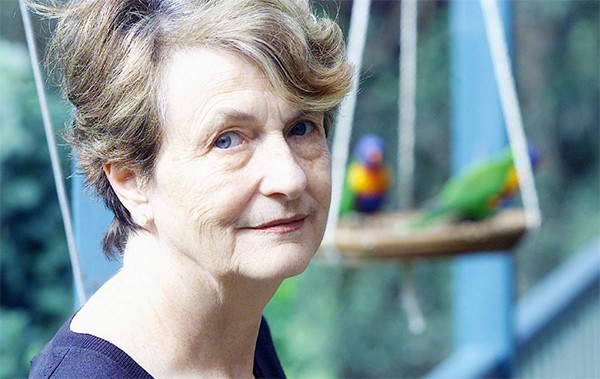
Damon Cronshaw, Newcastle Herald, 12 January 2020
Australians should be terrified of the prospect of a nuclear power plant being built in their region, says Helen Caldicott, the world’s foremost anti-nuclear campaigner.
“There’s always the risk of a meltdown like Chernobyl, Fukushima or Three Mile Island,” said Dr Caldicott, who once lived at Matcham on the Central Coast.
“Living near a reactor will subject your children and grandchildren to the risk of leukaemia and cancer.”
Despite a strong push towards renewable energy, the nuclear question continues to be asked amid concern that the transition away from fossil fuels isn’t happening fast enough to save the world from catastrophic climate change.
The nuclear debate was reignited with a parliamentary inquiry in Australia last year.
A fortnight before Christmas, the energy committee running the inquiry released its report. It concluded that nuclear energy should be considered as part of Australia’s future energy mix.
“Australia should say a definite ‘No’ to old nuclear technologies but a conditional ‘Yes’ to new and emerging technologies such as small modular reactors,” committee chair and Fairfax MP Ted O’Brien said.
Dr Caldicott said opening the door to nuclear power was “madness”.
She said the so-called “nuclear renaissance” seemed dead and buried after the Fukushima catastrophe.
“One-sixth of the world’s nuclear reactors were closed after the accident,” she said.
She said the corporations that invest in making nuclear plants and radioactive waste had a “new strategy” to develop small modular reactors.
While corporations may claim such reactors could be sold without the dangers inherent in large reactors, she said “there are no safe nuclear power plants”.
If Australia proceeded towards nuclear power, some fear the Hunter could be earmarked as a site for reactors or waste dumps, given its history in the energy sector.
Shortland MP Pat Conroy, who is also Shadow Minister Assisting for Climate Change, has raised serious concerns about this.
“Several sites in our region have been floated as locations for nuclear power stations. I don’t know anyone who wants to live next door to one,” Mr Conroy said.
The Australian Energy Market Operator found that the cheapest new electricity for Australia was renewable energy – wind and solar – backed up by pumped hydro storage and gas.
“Those arguing for nuclear power are arguing for higher energy prices. Nuclear power just does not add up,” Mr Conroy said.
The committee’s report recommends a partial lift of Australia’s moratorium on nuclear energy.
It urged the federal government to keep its moratorium on Generations I, II and III reactors while lifting it for Generations III+ and IV reactors, so “only the newest and best” were considered.
Mr O’Brien said “the Australian people should be at the centre of any approval process”.
“If we’re serious about reducing greenhouse gas emissions, we can’t simply ignore this zero-emissions baseload technology,” he said.
While nuclear plants don’t release emissions, greenhouse gases are emitted in creating and maintaining the infrastructure for nuclear energy, along with uranium mining and enrichment and nuclear waste disposal.
“We can do 100 per cent renewables,” Ms Caldicott said.
“What the government should be doing right now is closing down the coal mines and re-employing those people and thousands of others to cover every house with solar panels.
“We should have electric cars powered by solar, not coal, and windmills everywhere including offshore.”
She said geothermal energy should also be tapped.
“South Australia has an enormous amount of geothermal energy,” she said.
“The solutions are there. They will empower the economy, employ millions of people and save the planet. Australia could become the energy superpower of the world.”
The Nuclear Energy Institute, a lobby group for companies doing nuclear work in the US, made a submission to the Australian inquiry.
“As we transition toward a cleaner electricity grid and seek to decarbonise our wider economies, nuclear energy will be essential,” it said.
“Given the continuing expansion of electrification worldwide and the increasing demand for clean energy, next-generation nuclear reactors – including small modular reactors – will be essential to sustainable power generation worldwide.”
Mr Conroy said there was clear evidence that nuclear power was “expensive, slow, inflexible and dangerous to the environment and human health”.
“In the absence of a coherent energy policy to lower prices and cut greenhouse emissions, Australians are taking matters into their own hands – installing solar panels and batteries,” he said.
“I doubt that any Australians think nuclear power is the way forward – especially those who might end up with it on their doorstep.”
In response to the parliamentary report, the Australian Nuclear Science and Technology Organisation said any potential lifting of the moratorium on new generation reactors and small modular reactors would be “subject to a technology assessment” that it would undertake.
“We welcome the report and the opportunity to share information more broadly about the potential of these innovative new nuclear power technologies.”
Originally published: https://www.newcastleherald.com.au/story/6564918/the-nuclear-question/